Feast or Famine
One of Amy Whitfield Hoar's diary entries for January 1932 was a eulogy to a typical South African summer: "Dry," she wrote, "mealies dying, no rain to speak of. The last good rains fell in November.
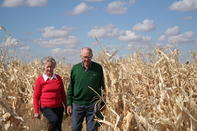
Things look bad." A month later, conditions hadn't improved: "No rain, hot and dry. Lionel chopping out some of his mealies. We had a little rain two weeks ago, but nothing to speak of. Clouds come up every day, then the West wind takes them away. Things look bad." Two years later, in October 1934, she wrote: "Terrible hailstorm this afternoon.
Nearly two inches of rain. Poor sheep just shorn. 108 sheep dead from wet and cold." This is the plight of the South African farmer because with a climate that is naturally predisposed towards fits of pique, it is feast or famine for anyone living directly off this land. Seven decades later and it is Albert Whitfield, grandson of Amy, who is working the same Free State farm.
Sidling towards his 80th birthday, and with a lifetime of farming under his belt, Albert understands that this is what it's about - flood or drought, drought or flood, with the odd good year in between.
Nourishment of Families
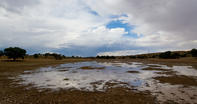
Driving through the flat, furrowed land with oxblood red Hutton soils showing through and the bleached stubble of maize stalks where last season's mealies once stood, he nods towards the fields. "One year I planted potatoes here and we had very heavy rain.
It washed the potatoes right out of the ground and the soil was completely levelled. Smooth, like this," Albert's hand makes a sweeping motion. "It was a lot of damage." Albert got contractors in and with a subsidy from the Department of Agriculture, dug out two wide, shallow gullies which are now anchored in place with a layer of cropped grass.
"We can have very heavy rains here, 80 mm in half an hour. Then these (gullies) look like two Orange Rivers flowing down through the lands." This is one of the many farms in the country's most productive maize province. Most of South Africa's maize, 92 percent of the 2.3 million hectare maize footprint, is farmed without irrigation, and nearly a million of those hectares fall inside the Free State. What happens here has implications for the nourishment of families across the country.
Maize Shortage
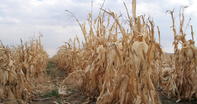
In 2007, the worst drought in 50 years hit the headlines and the Whitfield farm was not spared. "Just after planting, the maize was growing prolifically. It was beautiful!" exclaims the farmer from behind the wheel of his bakkie. "And then the rains cut off. The rain just stopped.
January and February were very, very dry." When he made his early season crop estimate, Albert was expecting an ample five or six tons of maize per hectare, comfortably above the three to four ton average for the farm. But after the failed rains, the final harvest amounted to two tons per hectare.
The maize shortage which results from this kind of drought ripples out through the entire country. By the close of 2006, food price increases were already outpacing inflation. Looking at the cost of a basic food basket, the National Agricultural Marketing Council calculated a 7.8 percent increase in the cost of food in 2006.
But for many basic food items, the increase was two or even three times that. Maize meal was up by nearly 30 percent, cooking oil by nearly 20 percent, red meat and chicken by 11.8 percent.
Poor Become Poorer
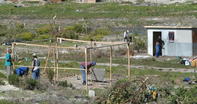
A complex interaction of market forces governs the maize price (including the amount of stock in the country, the Chicago Board of Trade and the rand/dollar exchange rate). But the heat waves and drought experienced across South Africa's maize-growing regions in 2007 drove the price of this staple grain even higher.
It is the economically marginal who really feel the pinch when crops are down, not because there's no food available, but because a food shortage pushes up the price, making them unaffordable to a country's poor. And it's these communities who are probably also grabbling with the longer-term stresses such as access to healthcare, poor education, HIV.
Market Demands
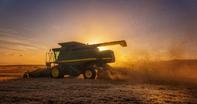
A maize trader pointed out an obvious but understated fact: that farmers are not in the business of food production out of altruism. They're in it so that they can maintain a livelihood, and that means they must keep their business afloat. They plant what the market demands and sell where the prices are high.
The inherent contradiction of poverty and food security is that the place where the food is most needed is not always the place where people can afford the highest prices. But how a farmer runs his business - and whether he keeps it afloat - is critical to a country's ability to feed itself. Albert Whitfield admits that he is a cautious farmer.
He doesn't blow the farm's capital on frivolous expenses, such as upgrading to the latest model Toyota or scrapping the workable old combine harvester just because a new-fangled one is on the market. Never go into debt for something like that, he maintains.
Rather save your cash reserves for the years when drought knocks you sideways and your farm's inputs exceed its outputs. Following his own advice may be why the Whitfield concern has remained healthy after three generations.
South Africa’s Bread Basket
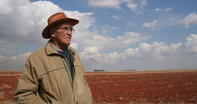
Either way, the Whitfields know there are some decisions to be made in the face of shifts in climate which are expected to make many parts of South Africa more marginal for maize production. Climate change modelling anticipates that the kinds of natural weather events, which Amy Whitfield wrote about 70 years ago, will be amplified by rising C02: increased frequency and intensity of heat waves and droughts; greater inundations of rain; increased evaporation; drying out of soils - all written into the future of South Africa's bread basket.
And this in a country where the growing need for water and staple food will outstrip the country's ability to supply them. According to the State of the Environment Report, our demand for water will exceed available resources by 2025, if not sooner.
The population of South Africa, Swaziland and Lesotho will climb from 47 million today, to about 70 to 90 million by 2035. In order to meet the region's growing food requirements, an annual three per cent increase in production is needed, but climate models predict annual yields will decline by between 10 and 20 percent by 2050.
By Leonie Joubert